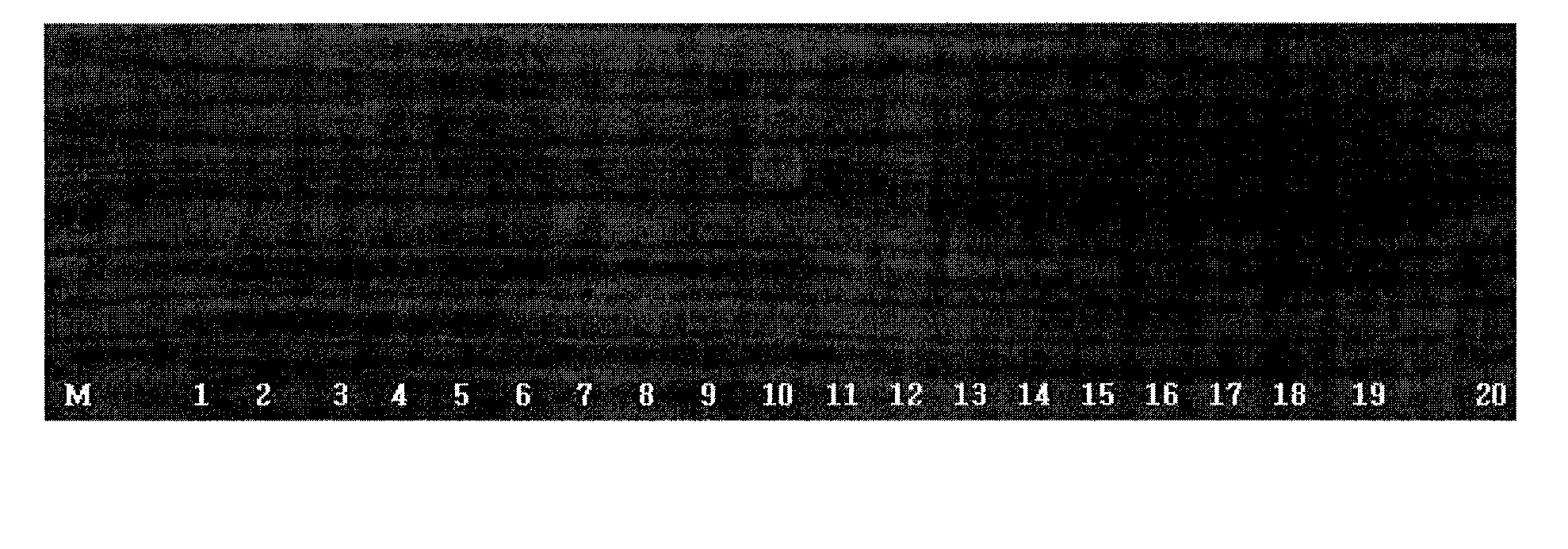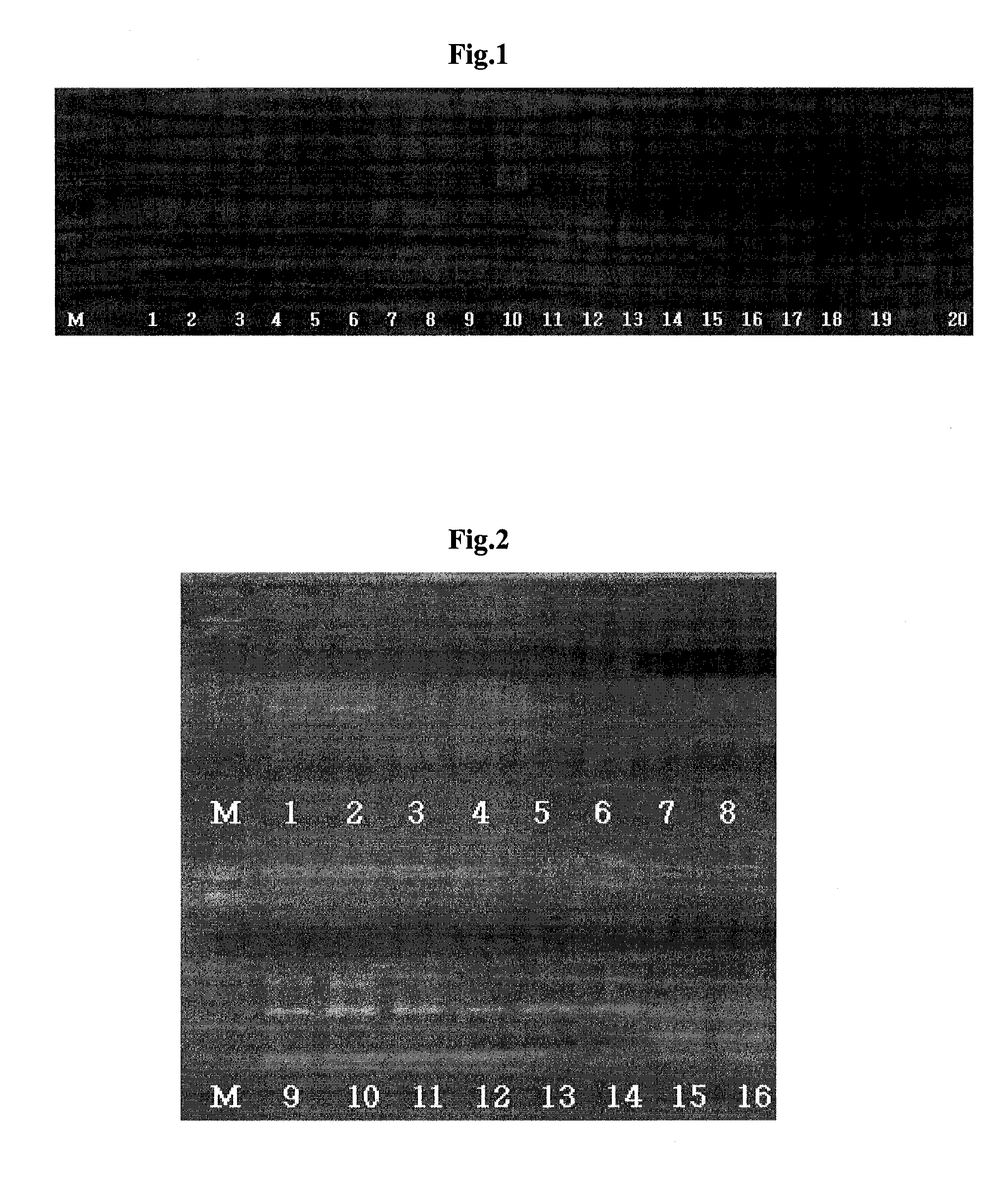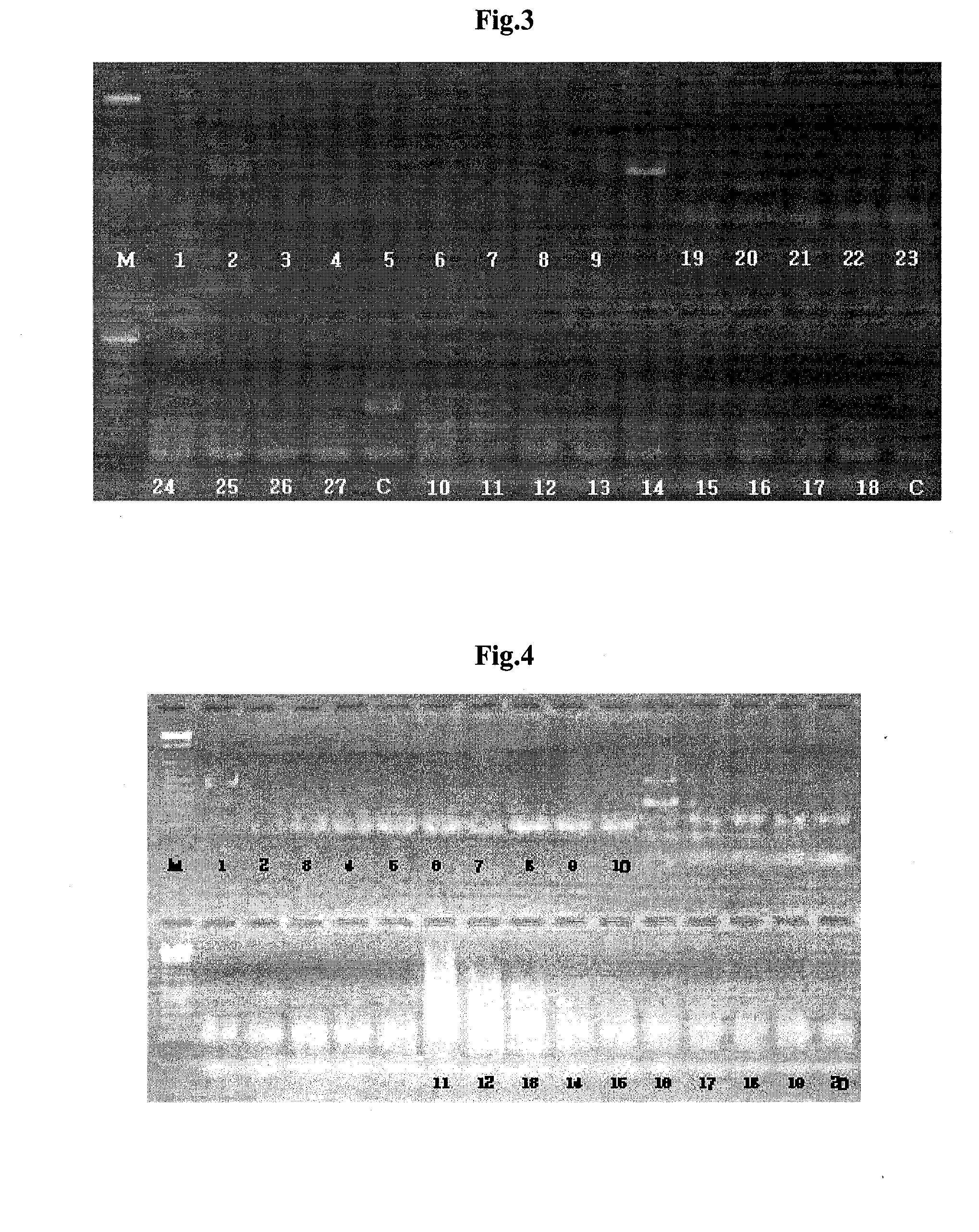Primer for Detecting Food Poisoning and Method for Rapid Detection of Food Born Pathogene
a technology for food poisoning and primers, applied in biochemistry apparatus and processes, sugar derivatives, organic chemistry, etc., can solve the problems of toxic food poisoning, food poisoning, food poisoning, etc., and achieve the effect of rapid epidemiological investigation of an infection and short tim
- Summary
- Abstract
- Description
- Claims
- Application Information
AI Technical Summary
Benefits of technology
Problems solved by technology
Method used
Image
Examples
example 1
Design and Preparation of PCR Primers for Amplifying Specific DNA of Five Kinds of Pathogens
[0074]To simultaneously detect Salmonella spp., Staphylococcus aureus, E. coli O157:H7, Listeria monocytogenes, and Vibrio parahaemolyticus, the primers listed in Table 2 above were designed and synthesized.
example 2
Nested PCR
[0075]2-1: Salmonella spp.
[0076]20 ul of Proteinase K (20 mg / mL) was added to 1 ml of Salmonella enteritidis (KCCM12021) of 108 to 1 CFU / ml, and then reacted for 10 minutes at 60° C. After finishing the reaction, the pellet was obtained by centrifuging the reaction product at 10,000 g rpm for 5 minutes, and suspended in 200 uL of sterilized water. This was heated at 105° C. for 20 minutes, then mixed with an equal volume of phenol / chloroform, and centrifuged at 10,000 g rpm, for 5 minutes to obtain the supernatant. The supernatant was mixed with an equal volume of ethanol and centrifuged at 10,000 g rpm for 5 minutes to recover the pellet, then 20 uL of distilled water was added to the pellet to prepare the PCR sample.
[0077]The PCR was performed in two groups. That is, PCR using the primer pair shown in SEQ ID NO: 1 and 2 was performed for one group, while for the other group, the reaction product from PCR with the primer pair shown in SEQ ID NOs:1 and 2 was used to perfor...
example 3
Verification of Primers
[0144]To verify the pathogen specificity of the primers in Example 1, PCR was performed on DNA of microorganism similar to the pathogens.
[0145]3-1. The Primer Pair Shown in SEQ ID NO:3 and 4[0146]FIG. 6 is a result obtained by performing nested PCR with primers shown in SEQ ID NO:3 and 4 for detecting Salmonella spp., and the lanes are described below, where lane M is a size marker.
[0147]A 200 bp PCR product is confirmed in Lanes 1-8, 13-14, 30 and 34 of FIG. 6. Therefore it can be seen that the primer pair shown in SEQ ID NO:3 and 4 can specifically detect Salmonella spp
TABLE 4LanePathogenConcentrationPrimer1Salmonella enterifidis KCCM12021102 CFU / mlSEQ ID NO: 3 and 42Salmonella enterifidis KCCM12021 10 CFU / mlSEQ ID NO: 3 and 43Salmonella choleraesuis subsp cholerae102 CFU / mlSEQ ID NO: 3 and 4KCCM410354Salmonella choleraesuis subsp cholerae 10 CFU / mlSEQ ID NO: 3 and 4KCCM410355Salmonella choleraesuis KCCM41575102 CFU / mlSEQ ID NO: 3 and 46Salmonella choleraesu...
PUM
| Property | Measurement | Unit |
|---|---|---|
| Temperature | aaaaa | aaaaa |
| Temperature | aaaaa | aaaaa |
| Temperature | aaaaa | aaaaa |
Abstract
Description
Claims
Application Information
 Login to View More
Login to View More - R&D
- Intellectual Property
- Life Sciences
- Materials
- Tech Scout
- Unparalleled Data Quality
- Higher Quality Content
- 60% Fewer Hallucinations
Browse by: Latest US Patents, China's latest patents, Technical Efficacy Thesaurus, Application Domain, Technology Topic, Popular Technical Reports.
© 2025 PatSnap. All rights reserved.Legal|Privacy policy|Modern Slavery Act Transparency Statement|Sitemap|About US| Contact US: help@patsnap.com



